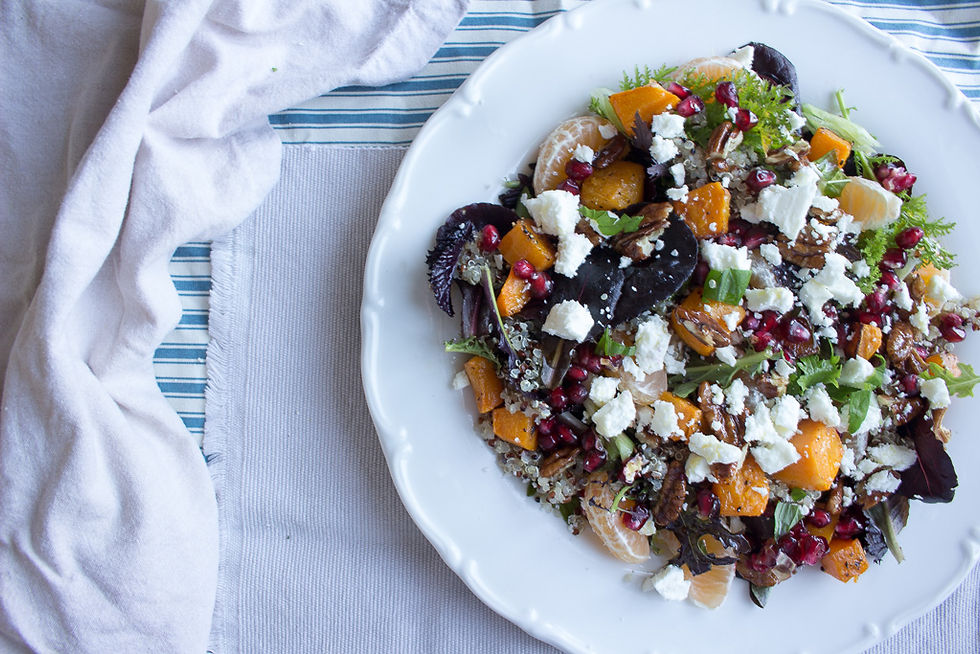Rethink your Space
- The Honest Project
- Feb 23, 2015
- 6 min read

How does it feel when you cannot find something you need, when you avoid having visitors over because the house is a mess, when you put off doing administrative tasks because you cannot find the form or letter you must complete, when you buy a processed microwave meal because you do not have the time to cook, when you are late for work in the morning because you cannot decide what to wear? Do you feel good or bad? Do you feel stressed and anxious or do you feel calm and peaceful? Do you put these things occurrences down to being disorganised or not having enough time or not having the motivation after a busy day at work?
All these are questions that I asked myself. I really thought about these things and even got out my notebook and scribbled down my thoughts. I acknowledged that I can be disorganised at times and that I tend to procrastinate and put off doing task I do not like. However, I identified that the main issue when these type of things occur is that I blame by physical environment. I put off doing the administrative task because the form I need is stuffed in one of four different places I put my post and I cannot be bothered looking for it. I am late in the morning because I couldn’t decide what to wear as my wardrobe was overcrowded with clothes, most of them needing ironing and trying to chose what to wear was stressing me out. I arranged to meet a friend down town for coffee instead of at home as the house was a total mess and I didn’t have time to tidy up.

The physical space around you plays a role in your mood, your thoughts, your wellbeing, your stress levels, your inner peace. Think of your favourite spa. It probably has a relaxation room, dimmed lighting, candles, essential oils burning, comfortable beds, relaxing music – all in an effort to make you feel relaxed, to help you unwind, to help you have some personal time in your own thoughts. If I pay money to go to a spa, I am paying not only for the treatment but also for the spa experience. I wanted to recreate a spa like atmosphere in my own bedroom and bathroom. I also wanted to apply the theory to other rooms in my house. This doesn’t mean having dimmed lights and essential oils burning in your kitchen – it means taking time to look at the purpose of each room, what you want that room to feel like and taking steps to achieve your dream space.

The space around us should enhance our happiness and give us energy as well as being peaceful and calming. We should avoid having spaces that frustrate us, annoy us, anger us and sap our energy. To achieve this, we do not have to live in our dream home by the beach or spend a lot of money on our existing homes. This is not about having expensive furniture or walk in wardrobes. We can work with out existing environment and for very little expense make significant improvements that will work wonders for us on an emotional level.
This all sounds great on paper, but how do we achieve this. What practical steps can we start to take to improve our surroundings so that it improves our overall wellbeing?
Take time to think about your surroundings and how they impact your mood. Acknowledge that your physical environment reflects who you are and impacts how you feel. Once you acknowledge this, the importance of enjoying and making the most of your physical environment becomes a higher priority.
Ask yourself how does your current physical environment make you feel? You may have one environment in particular that you would like to focus on, such as your office or your bedroom. You may wish to focus on your entire home and work space all at once. Whatever feels right for you. Write down what you are feeling when you think of the particular physical environment.

Next ask yourself what is the purpose of the chosen space? If it is a bedroom, the purpose will be to sleep in, but it may also be to get ready for work each morning, to read, to be intimate. If it is a kitchen, the purpose will be to prepare meals, to eat, to chat with family members, etc. You chose the purpose for a particular space and this should be kept in mind when decluttering, reorganising and enhancing this space.
Next make a list of what you like and dislike about this space. On the ‘like’ list, you might include things such as liking the way the room gets sunlight in the morning, or liking a particular piece of furniture. On the dislike list, include things that frustrate you about the space. A kitchen might always be cluttered with family members’ coats and jackets as they throw them on the backs of chairs as they come in. The piece of furniture you like might be overcrowded with things meaning you cannot see it properly. Now that you have made your like and dislike list get to work on making the most of what you like and changing what you don’t like.

Let’s start with the dislike list and take a step further. Gather all of the items relating to what you dislike as well as those items that do not serve a function in the space. Set yourself a task of getting rid of 20% of the things in that space. For example in a kitchen for a household of four, it may annoy you that there is a constant stream of dirty dishes. Consider do you need to have an assortment of 20 different mugs on the go at any one time? Can you throw out mugs that are chipped or cracked? Can you keep just 8 mugs in the press for everyday usage and box away the rest or store them elsewhere for use when visitors come? Likewise, can you go through your wardrobe and clear out 20% of your clothes to go to charity shops for recycling? Just by clearing out clothes that are worn, torn and faded, you might get rid of 20% in one go. Identify the items that are not required for the purpose of the space and move them out of that space. They can be stored elsewhere or discarded if they are of no use.
Next, move on to your like list. If you love a piece of furniture ask yourself how you can make the most of it. For example, you might love your beside table but have it cluttered with too much things meaning you cannot see it properly. It might be covered with books, old magazines, face-creams, medication, jewellery, etc. Declutter it by creating separate spaces in your bedroom for cosmetics, jewellery and medications, put books on the bookshelf, throw out old magazines. Enhance your beside table by keeping it clear of clutter and instead put a lamp on it and keep the one book you are currently reading on it.

Examine your habits. This means identifying the root of the problem? What is causing this clutter and disorganisation? Do you buy a lot of clothes and is your wardrobe over crowded? Make a deal with yourself that for every new item of clothing bought, you give an old item away. Is your kitchen drawer over flowing with junk mail? Put a sign on your letter box saying “No junk mail please”. Do you leave things down in the first place you find? Start following the ‘one touch rule’ – this means only putting something down if you are putting it down in its rightful place. So when you take off a necklace, do not put it down on your bedside table. Instead put it down in your jewellery box. Likewise, don’t take off your coat and leave it on the back of a kitchen chair when you can easily take an extra few seconds to walk to the coat stand and put it there.
Enhance your space. Once you have decluttered and organised your space, look at ways to enhance it. What can you do to the space so that it reflects your personality better and helps energise you? You might like a scented candle, a blanket to wrap around yourself when reading, pictures of family members, flowers, a plant. Whatever it is that you feel will make this a better space for you. This doesn’t mean re-cluttering the space. It means carefully chosing items that will help this space to inspire you, energise you and make it a space in which to spend time.







Comments